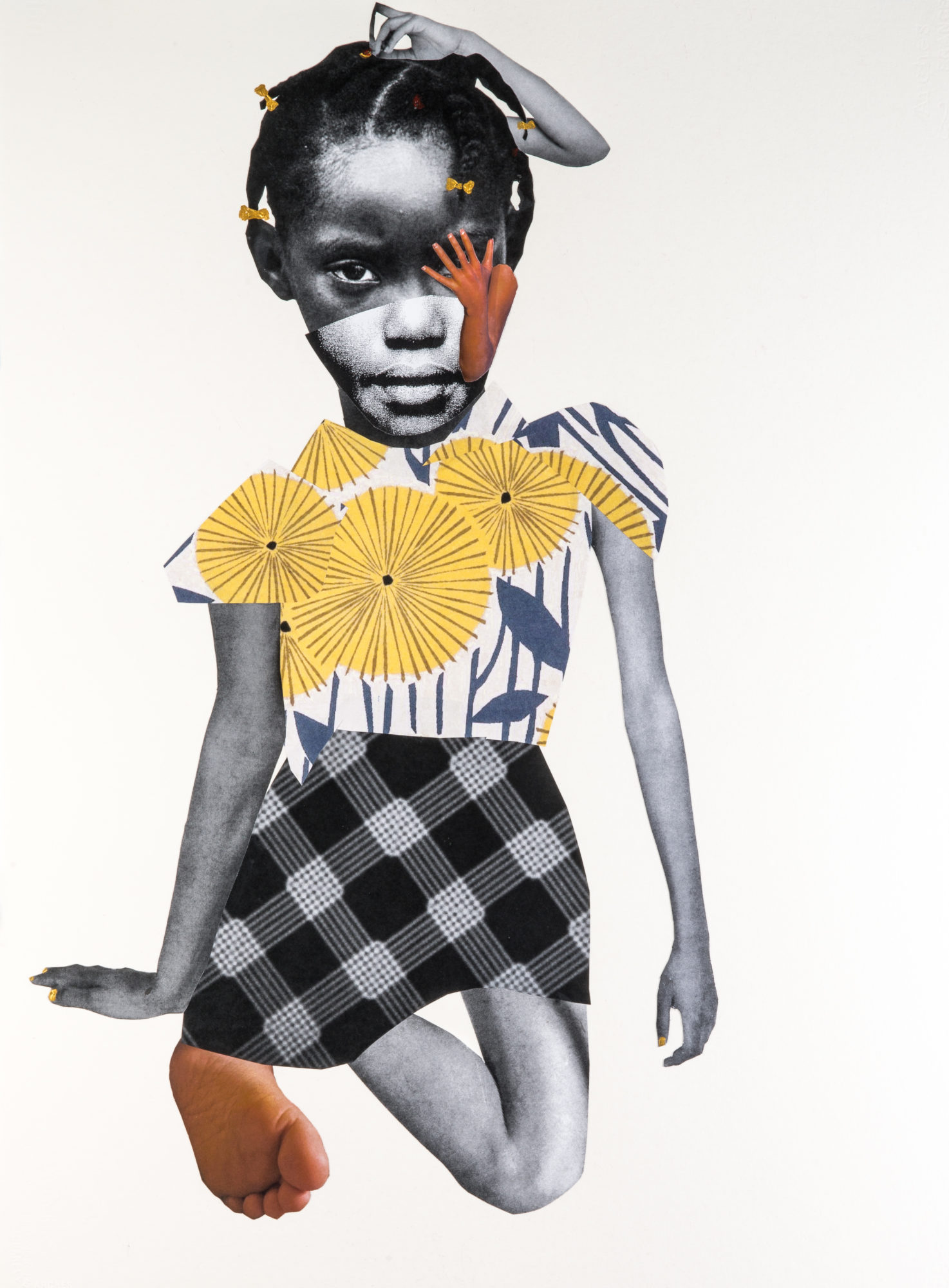Deborah Roberts: The Evolution of Mimi
Share:
The sharp angles, contrasting patterns and colors, and outsized body parts in Deborah Roberts’ collages of young girls are a telling metaphor for the challenges encountered by young black women as they strive to define their identity. In more than 50 collages, paintings, and hand-painted seriographs brought together for The Evolution of Mimi at the Spelman College Museum of Fine Art [January 25, 2018 – May 19, 2018], Roberts simultaneously reflects the strength and resilience as well as vulnerability and insecurity of her subjects. This multiplicity is typified by the exhibition’s title, which is a riff on Roberts’ collage series The Miseducation of Mimi—a confluence of Lauryn Hill’s album “The Miseducation of Lauryn Hill” and Mariah Carey’s album “The Emancipation of Mimi.” Both popular in Roberts’ younger days, Hill typified the proud, black, unapologetic artist while Carey represented the pop culture mainstream. Together they characterize the decision faced during this adolescent period of how to balance the pressure to conform to social constructs and the need to assert individuality.
Robert’s early collages began as a very personal investigation. One of eight children, Roberts often felt overlooked or not fully recognized growing up. In works like The Miseducation of Mimi (2011), Roberts conveys those feelings of anonymity by obscuring a photograph of herself as a young girl with paint and mixed media techniques. Realizing she was not alone in this struggle, as Roberts evolved this series she eventually moved away from her own image and began to collage together unknown likenesses sourced from the Internet. She does admit to including a few celebrities—one work has Muhammad Ali’s hand, another Picasso’s; one image features Michelle Obama’s arms—but central to most are faces belonging to anonymous children. As this body of work has progressed, her painted backgrounds have virtually disappeared such that the primacy of the figure reigns. Yet the artist’s hand can still be seen in little touches—in her rendering of a simple red hair bow, a pair of earrings, or a fleck of gold on the nails.
Most of Roberts’ subjects appear to hover around the age of 10, an age when young women explore their identity through their choice of clothes and hairstyles. Checked or striped shirts and skirt, like those in Harvest (2017), adorn bodies with mismatched limbs, symbolic of the awkwardness of puberty and the alienating experience of physically changing bodies in adolescence. A variety of skin tones, hairstyles, and physical features are cut and pasted from different sources—mismatched elements that become signifiers highlighting the preconceived cultural and social constructs the black community, the white gaze, and society at large have attached to each appearance.
A similar type of profiling often occurs with names, a fact Roberts explores in another series of purely typographic works on view at Spelman. Each includes a list of names Roberts gathered from friends that they would associate exclusively with young black women, such as Raeschell, Tamikka, Nakeisha. In I Ain’t No Woman (2017) Roberts has handwritten in comments she overheard customers make while her columns were being printed in a copy store, including “Sounds like a sex act” and “Whoever named her child that name needs therapy.” Another work places red squiggly red lines underneath names that had been flagged by spell check—challenging assumptions about intentionality and the neutrality of language, and pointing out again how social constructs determine who is inside the canon and who is out.
Deborah Roberts, “The Guard,” 2017, mixed-media and found photocollage on paper, 30 x 22 inches [courtesy of the artist and Fort Gansevoort]
While cultural history is clearly important to Roberts, it is impossible to look at the work and not recognize her deep respect for art history. There is no escaping the influence of both Hannah Höch’s politicized Dadist works and Romare Bearden’s depictions of the African American experience on her collage technique. The fractured facets but unabashedly piercing eyes of her figures also recall Picasso’s catalyzing Les Demoiselles d’Avignon (1907) and her sense of pattern and color, reflected in the clothing, pays homage to Matisse, a debt she openly acknowledges in the work Untitled After Matisse (2016).
The fact that Roberts’ work functions on so many levels simultaneously is its greatest strength. While it speaks to a specific audience, its lessons apply to the larger conversation of female studies and body politics. Roberts’ work is ultimately a celebration of difference and a reminder of the human struggle to discover personal identity both within oneself and amid the world around us.




